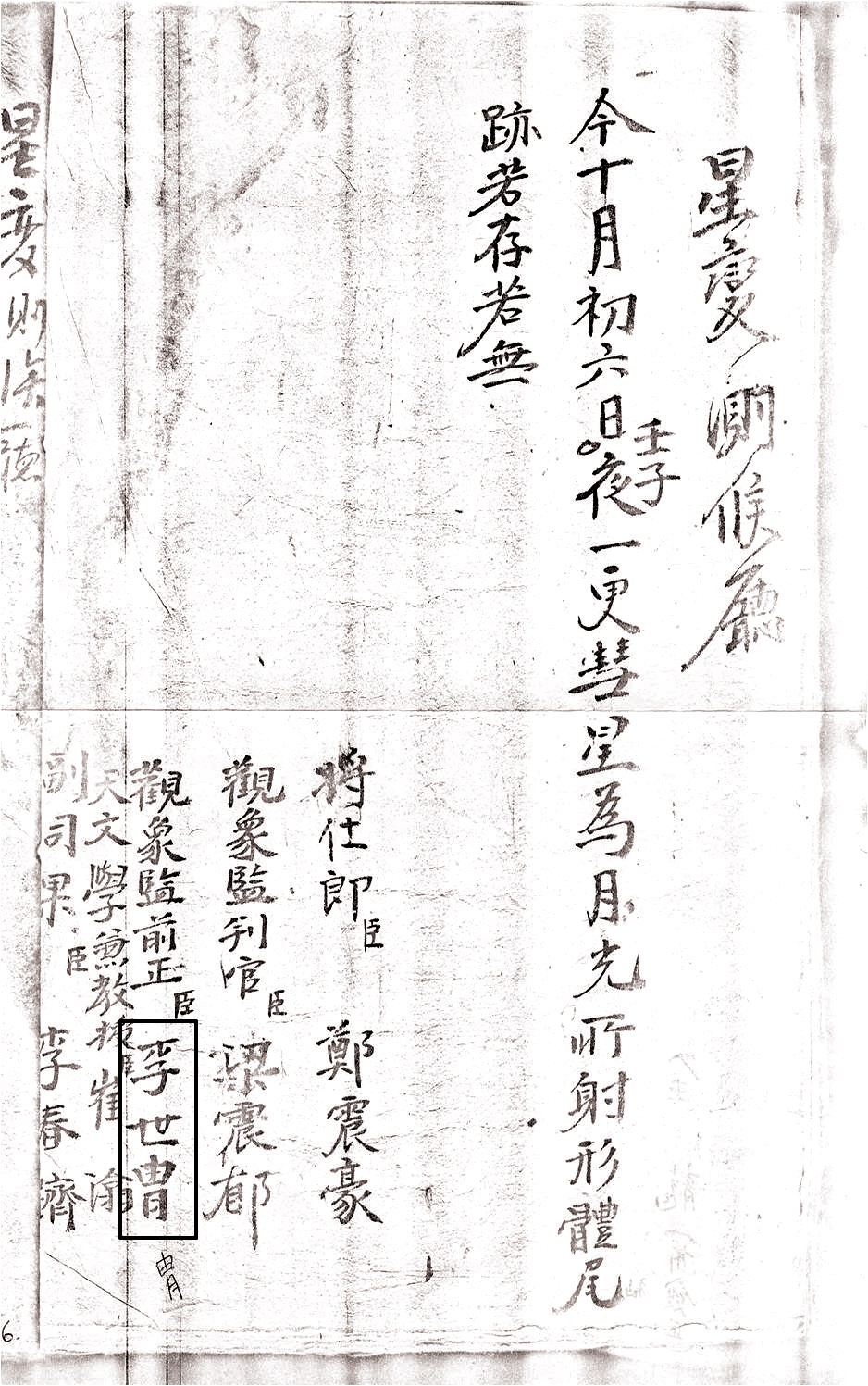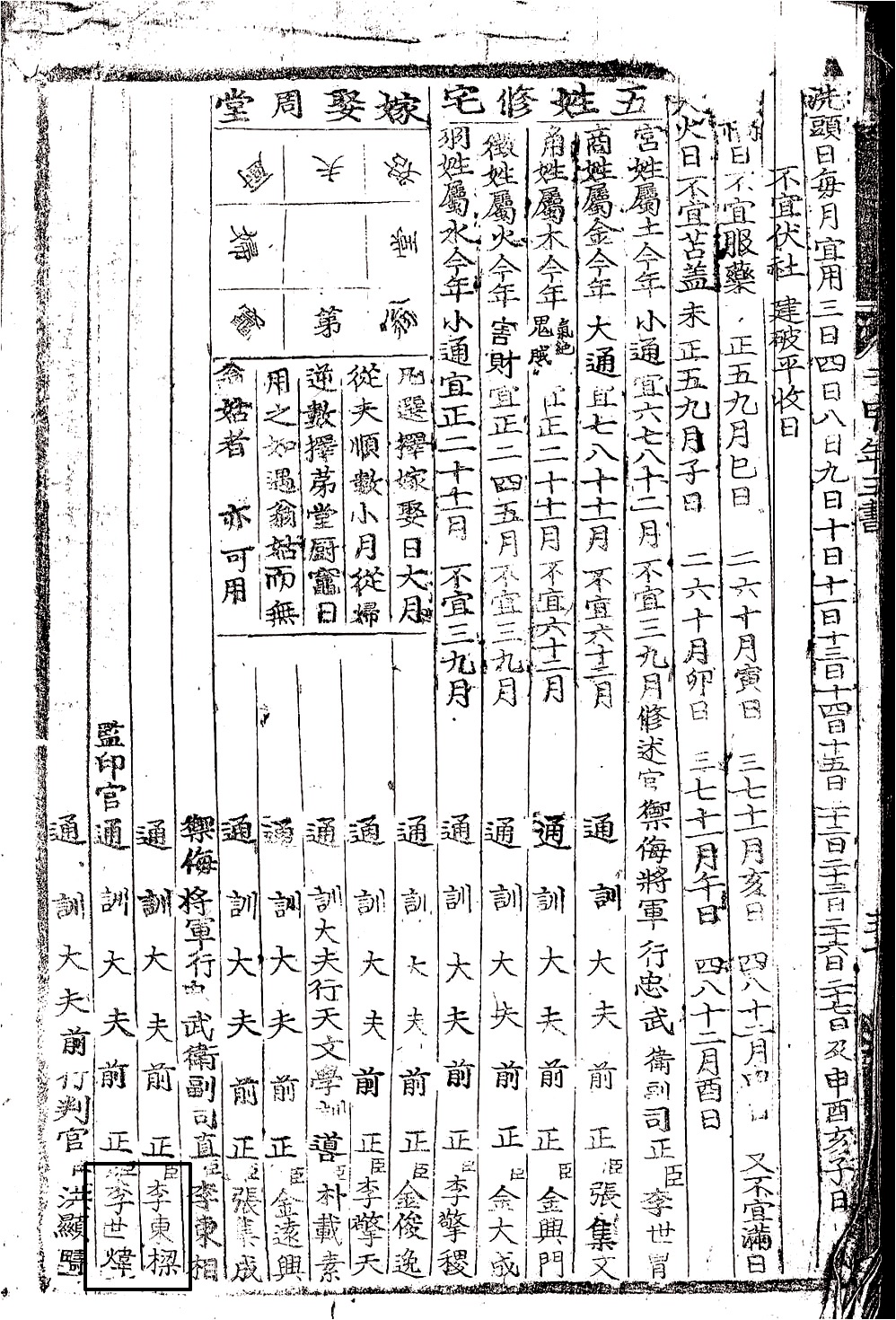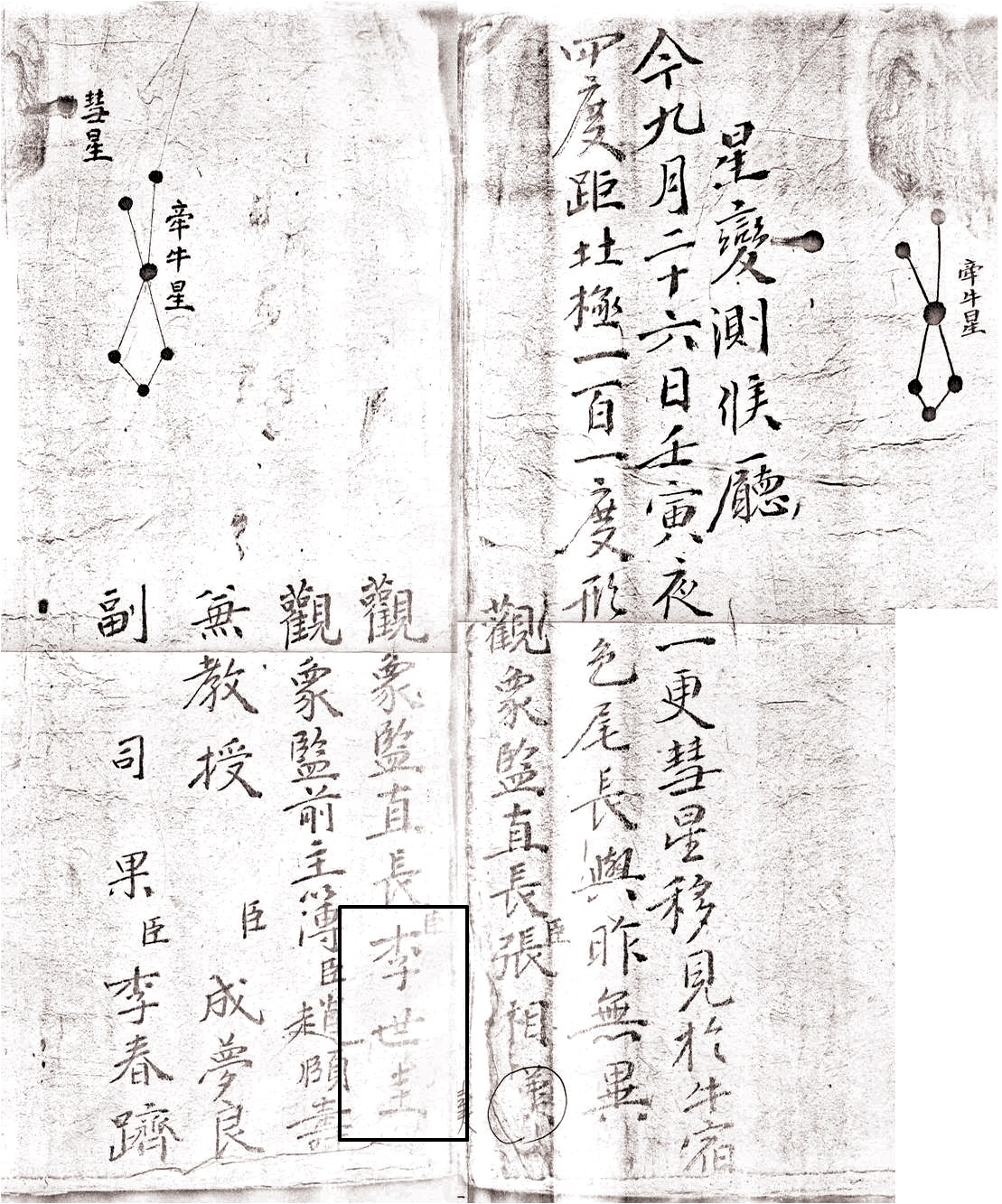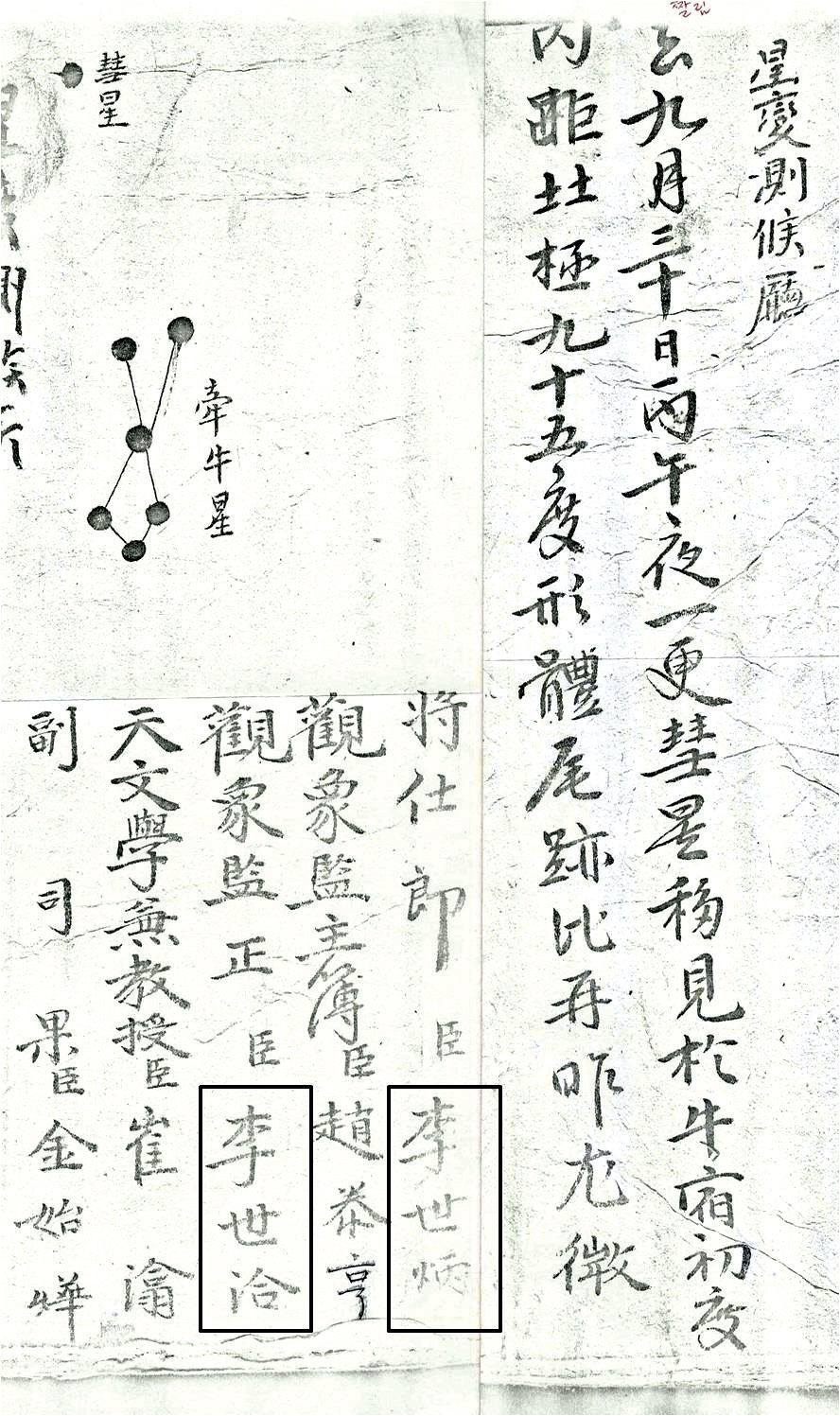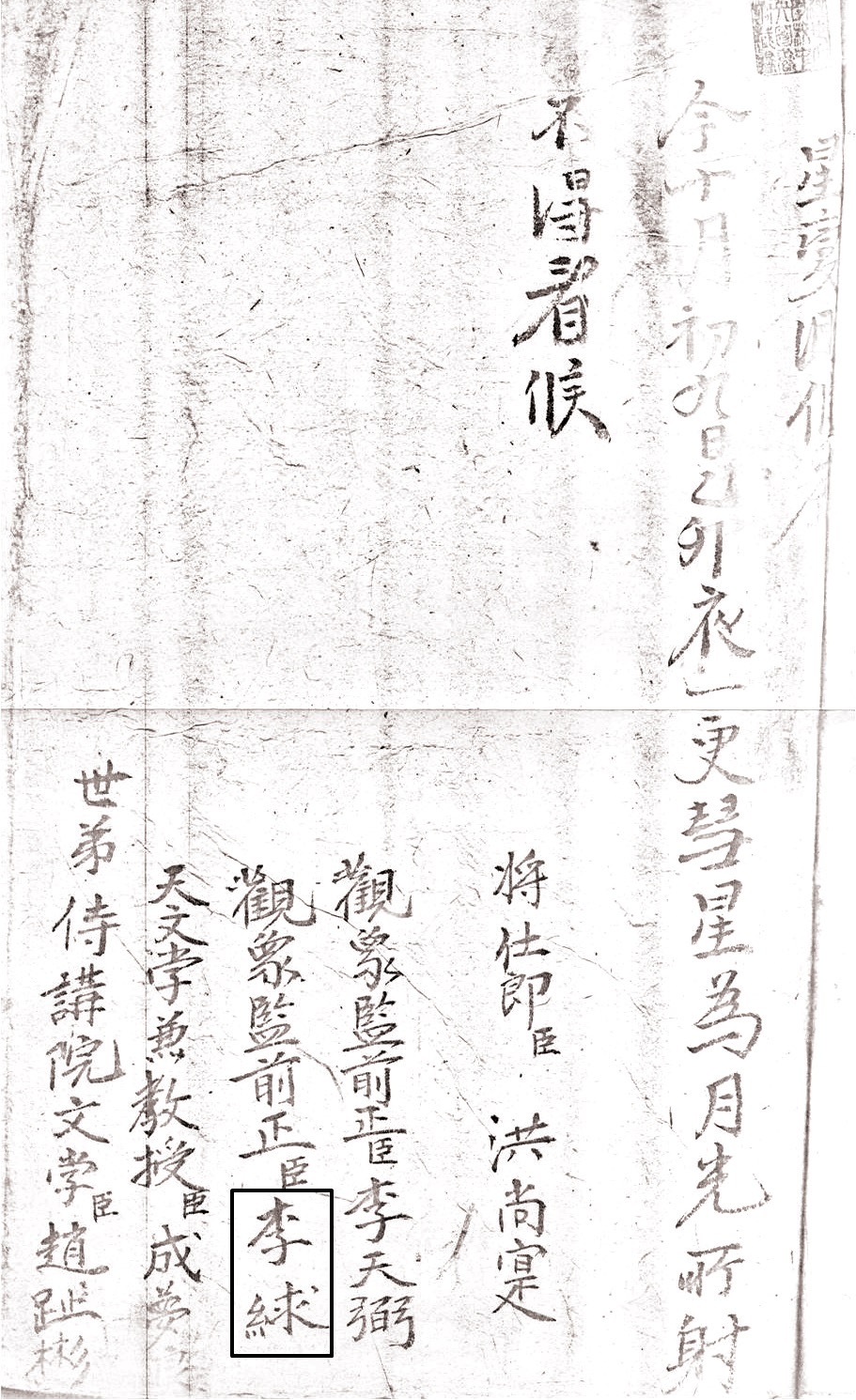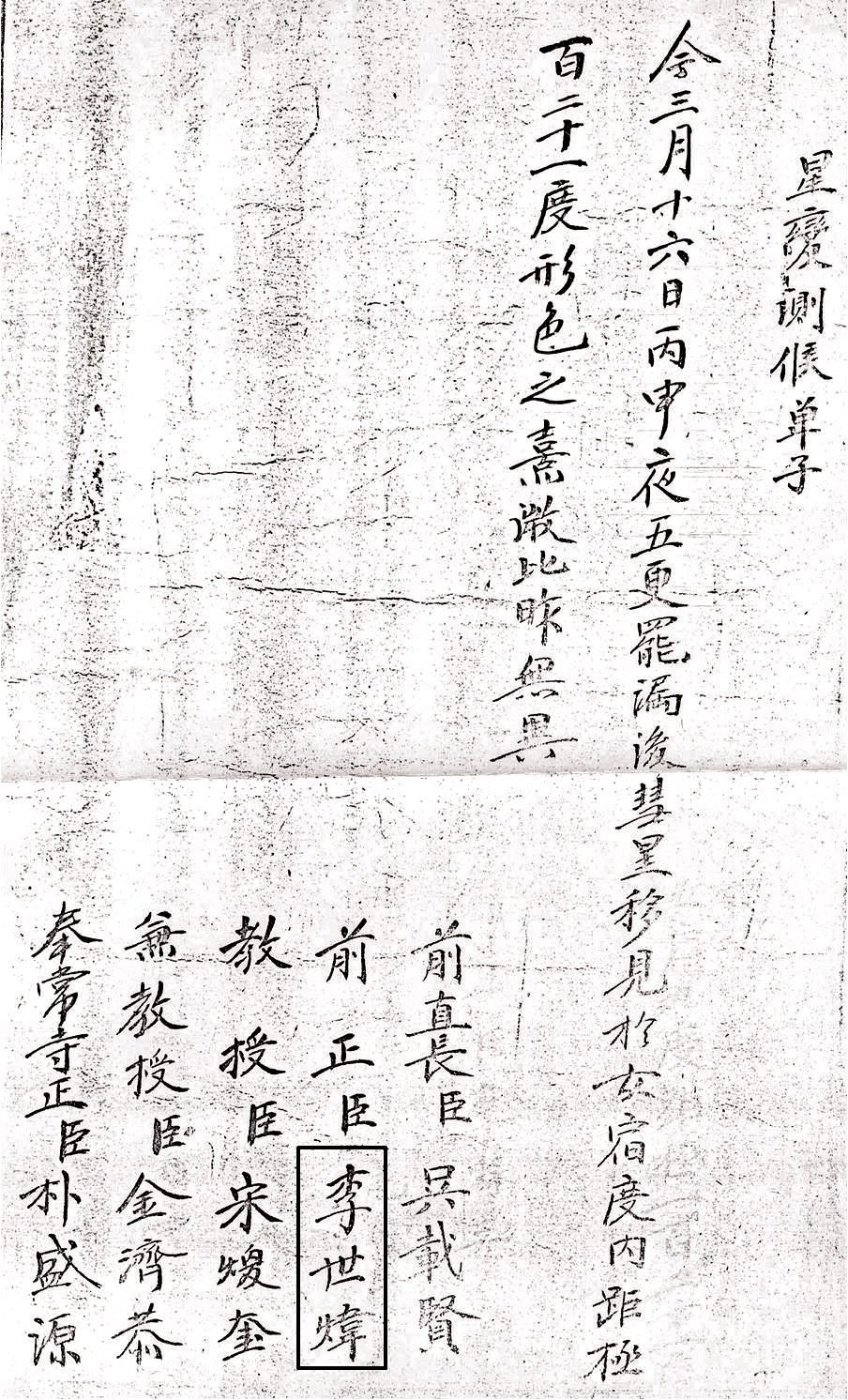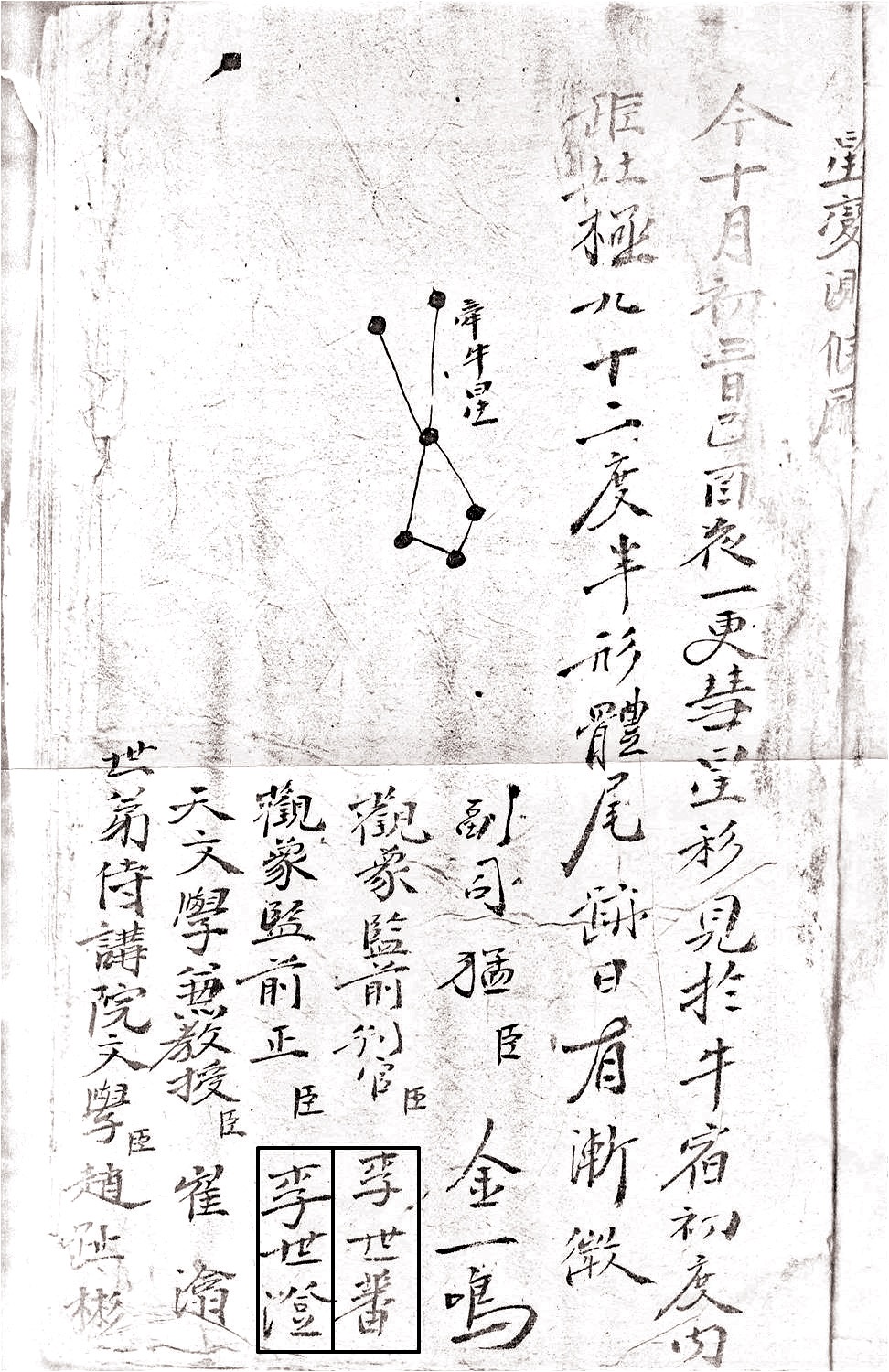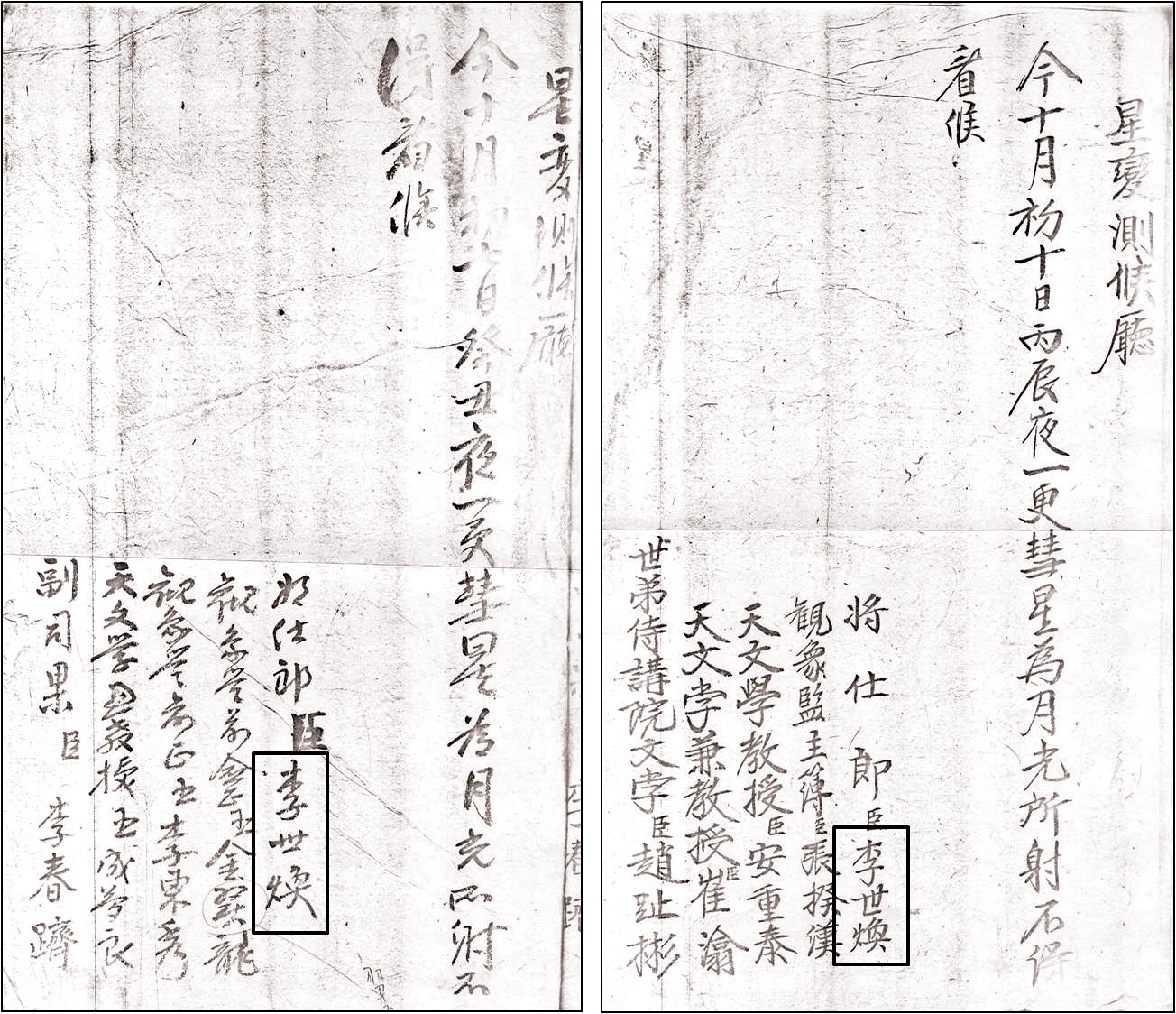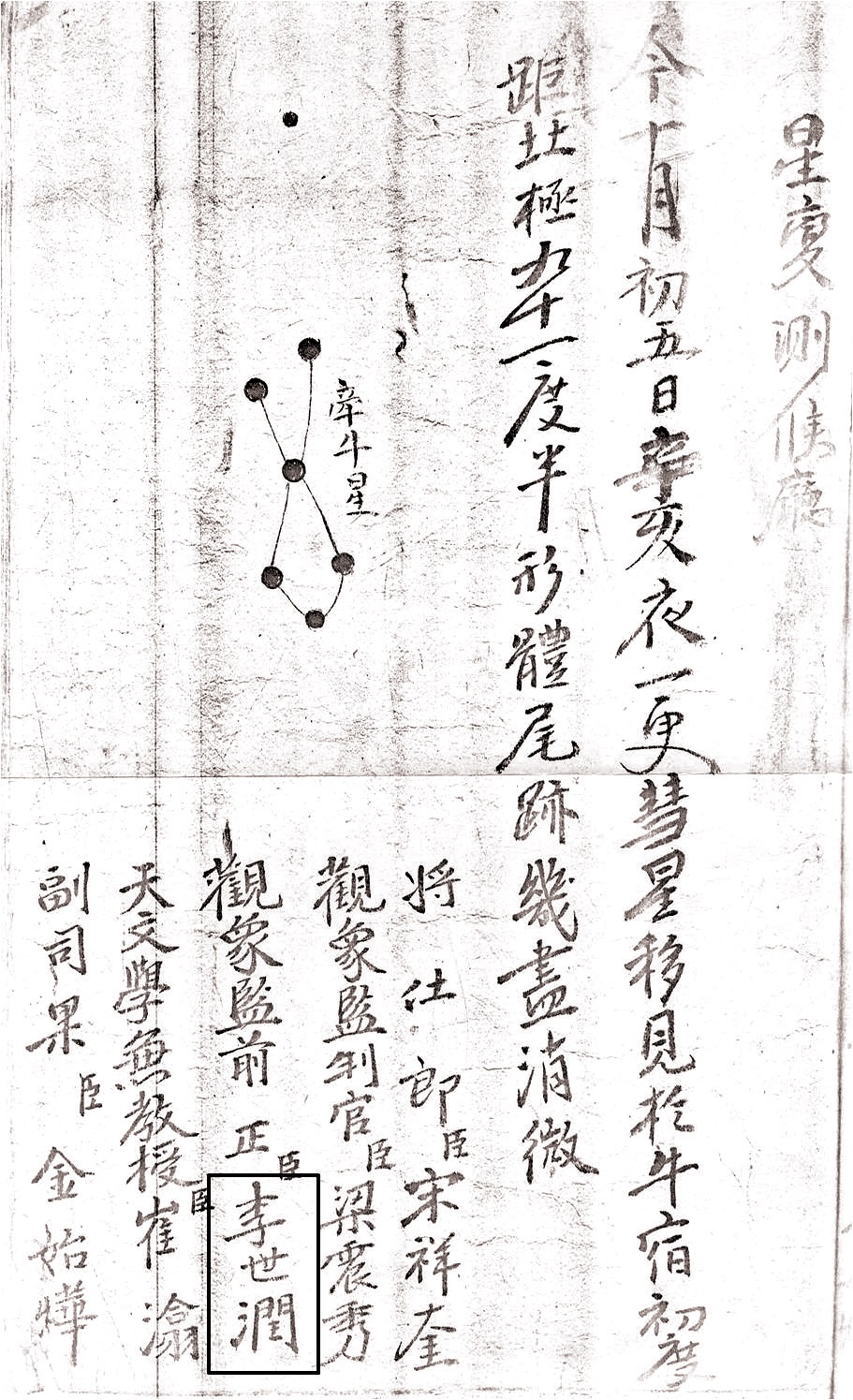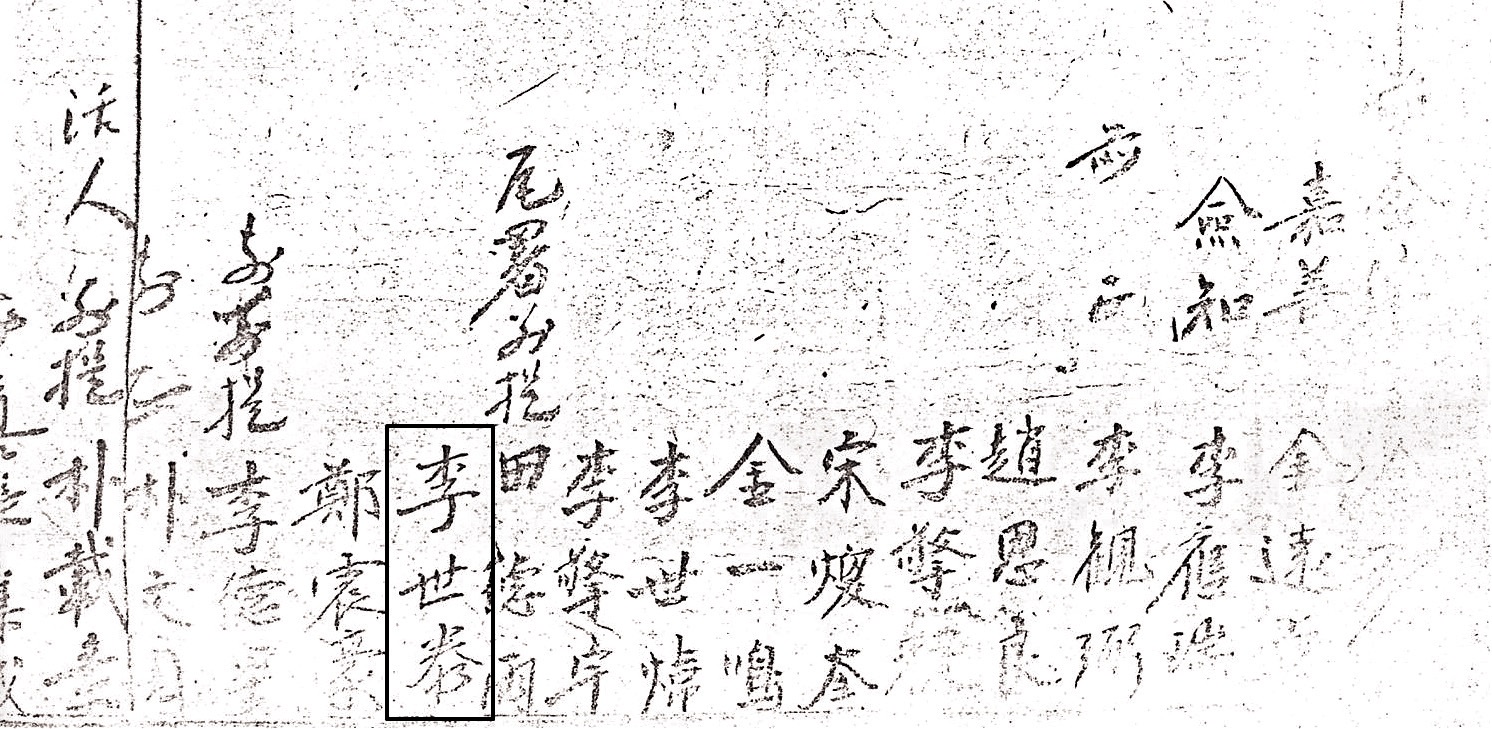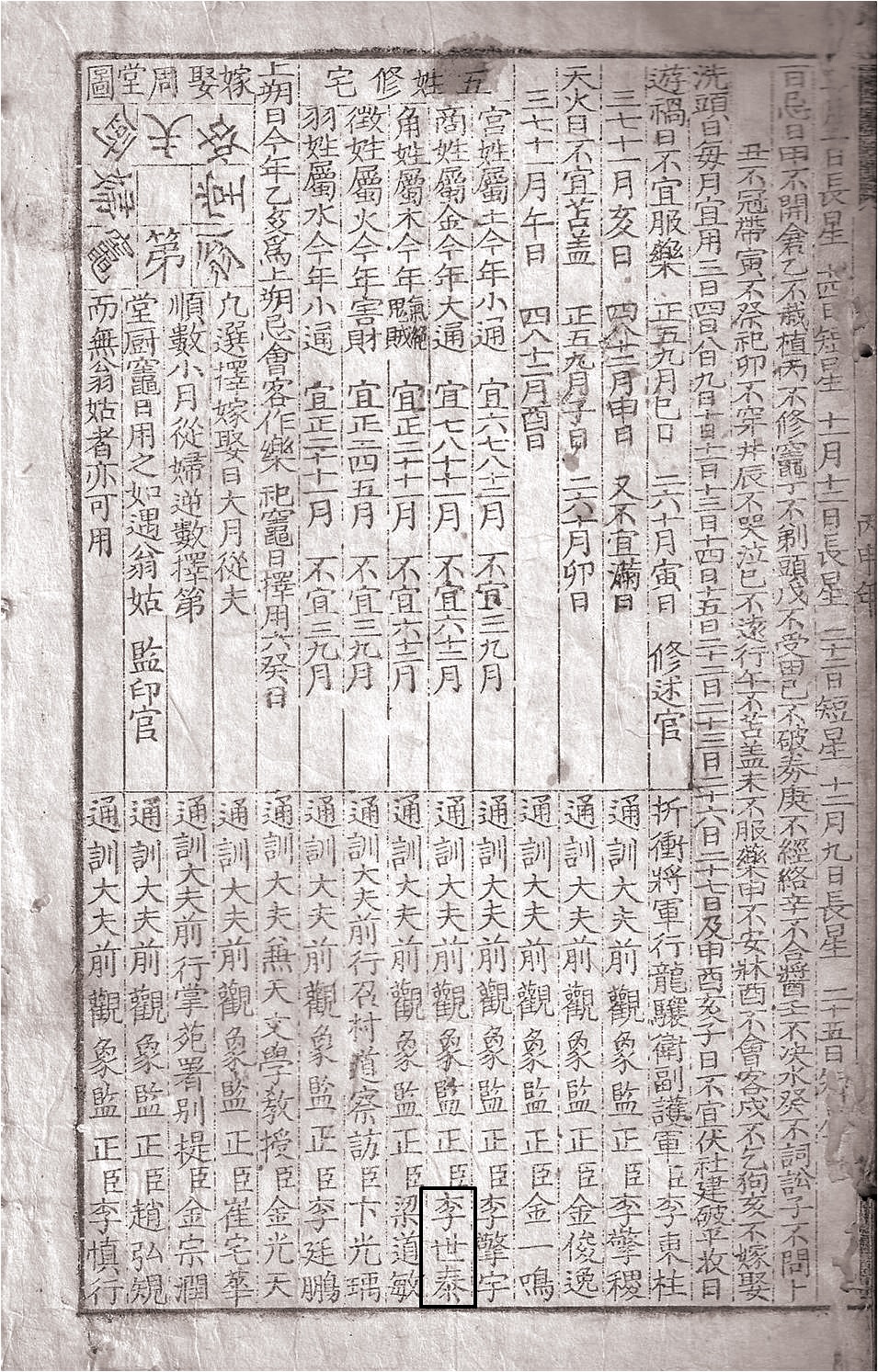



In Joseon dynasty (1392-1910) were there many distinguished scientists. Yet today’s science-historians in Korea have had been worked for their works and lives of very limited well known scholars only, around or slightly more than a dozen in number. It is quite true that these small number would not represent all the achievements which were made during the period, particularly, of the 15th through 18th centuries in the Korean history of astronomy. In order to understand the highlights of science in Joseon fully, the time has fortunately been riped for the search of those neglected majority scientists who devoted their lives behind-the-scenes.
However, their names are far behind of our reach because of the poor records in the Korean histories. This situation may be analogues with the statement of W. Carl Rufus (Rufus 1936) who lived in Korea for ten years, 1907-1917.
“Looking for survivals of ancient Korean astronomy is like searching for the claws of the dragon.”
The searching of manpower plays important part of infrastructure in the study of history of astronomy in Korea. We have been searched names of scientists with materials not only the major Korean histories but also the documents which had been relatively ignored by the present-day science-historians. In this line of efforts over the period of last decades, we have uncovered more than 500 names of scientists, mainly astronomers, who were belonged to the
This work is to identify 11 names whether they belong to a same family or not. While searching their names in each genealogy one was dropped out and five more names have been found. We present these 15 scientists in total with their family background and achievements.
A total of 11 names with Yi Se- in common has been listed according to hangul order not English alphabetical, and they are as follows:
Yi Se-gyu (李世圭), Yi Se-beon (李世蕃), Yi Se-byeong (李世炳), Yi Se-wui (李世?), Yi Se-yoon (李世潤), Yi Se-ju (李世胄), Yi Se-jing (李世澄), Yi Se-tae (李世泰),Yi Se-hyeung (李世衡), Yi Se-whan (李世煥) and Yi Se-heup (李世洽).
These are all astronomers who lived in the early and mid-18th century except one Yi Se-hyeung (李世衡). Our preliminary investigation has uncovered that this Yi Se-hyeung was lived in the reign period of King Sejong who was about 300 years prior to others. And, therefore, the remaining ten names became our object of further investigation.
As is well known fact that Yi is the one of the most populated names in Korea, we have to survey 16 different Bon’gwan (本貫)s which have Yi as their surname in common. Our very first attempt for their Bon’gwans was started with two major histories,
Our second attempt was then to consult with an encyclopedia
Our third attempt was fortunately successful in finding some of other members. This was done by the consulting with the HankukYeokdaeInmulJonghapJeongboSystem, which was edited using mainly information in the
Our last attempt, the most laborous and time consuming process, was to check and confirm their names in each Yi genealogy, Jokbo (族譜) of Yi (李氏). The biggest difficulty was the encounter with the genealogy of Kyeongju Yi (慶州李氏). The number of population which belongs to this Yi family is so large that the family itself has 21 independent
[Table 1.] Ten and five additional names of astronomers with their Bon’gwans.
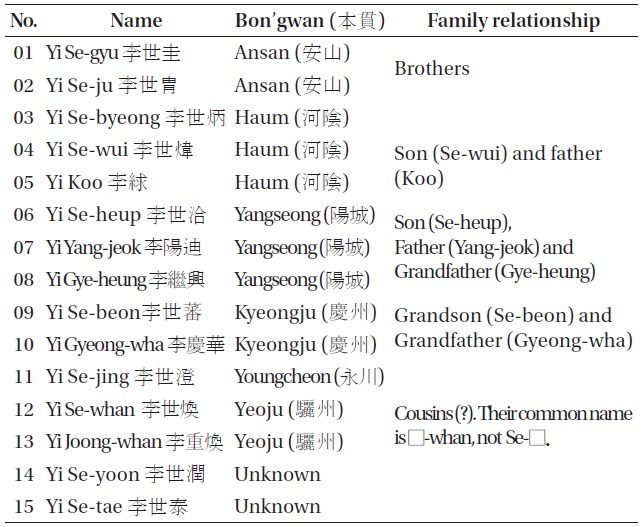
Ten and five additional names of astronomers with their Bon’gwans.
branches (派). Each branch has many generations (世孫) since its origin ranging over 30, and thus this made us in a great confusion which generation is equivalent to the early and mid-18th century of our interest. One of the most difficult case was the name Yi Se-beon (李世蕃) as an example. This name is enlisted in 5 different branches among 21; a 21st generation (世孫) for
Overcoming many other difficulties we have found five additional astronomers at the end. These five new entries are all family relations with ten astronomers as either father, grandfather, great-grandfather or cousin. Let us now list these 15 names in Table 1.
3. BRIEF INFORMATION FOR EACH ASTRONOMERS
We have now reached to our goal to investigate personal information of each of ten astronomers even though their family background and life are poorly known.
Se-ju’s Bon’gwan (本貫) is Ansan (安山) and his childhood name (子) was Gongseo (公瑞). He was born in 1676, the 2nd year of King Sookjong’s reign period, but his death is not known.
Se-ju’s precedents were high ranking officers in the government. His father Yi Sang-baik (李尙白) was
Se-ju had passed a state examination
are found in two documents. The first one is
Se-gyu’s Bon’gwan (本貫) is also Ansan (安山) as his elder brother Se-ju, but either his childhood name nor his years of birth and death are not known. His family members in a direct line should be the same as those of his brother
Se-ju. His wife’s family, on the other hand, also seemed high ranking officers in the government. His father-in-law Bak Choong-geon (朴忠健) was
Se-gyu had passed a state examination
However, Se-gyu’s achievement is poorly known leaving us only one record
Se-byeong’s Bon’gwan (本貫) is Haum (河陰). He was born in the 22nd year of King Sookjong's reign period (1696), but his death is not known.
His father Yi Hyeon (李絢) was a high ranking military officer
Se-byeong had passed a state examination
Se-byeong has left us his name as an observer of the 1723 Comet (Gwansang-gam 1723). This was made 9 years after his passage of the examination in 1714. But his position at the Royal Observatory was
Se-wui’s Bon’gwan (本貫) is Haum (河陰). He was born in the 35th year of King Sookjong’s reign period (1709), but his death is not known.
Se-wui’s father Yi Koo (李絿) had passed his state examination in the section of mathematics, and advanced to the
Koo had been engaged in the observations as an observer of the Gwansang-gam. There are two records, which support this claim. The first one is
of this comet at the end of the
Se-wui has had passed a state examination
According to the HankukYeokdaeInmulJonghapJeongbo System, Se-beon’s Bon’gwan is Kyeongju (慶州) and his childhood name was Goon’sil (君實) (cited 2012 Nov 21, available from http://people.aks.ac.kr/index/aks). He was born in the 22nd year of King Injo (1644) but his death is not known. His father Yi Yi-gwan (李?觀) was
Se-beon has had passed a state examination
Se-beon had left us one record which was made in the 3rd year of King Kyeongjong (Gwansang-gam, 1723) when he was at the position of the
Se-jing’s Bon’gwan (本貫) is Yeongcheon (永川) and was born in the 27th year of King Sookjong (1701) but his death unknown.
Se-jing’s father Yi Han-sang (李漢相) had a government position
The year when Se-jing passed a state examination
Se-jing’s first contribution to astronomy was the 1723 Comet observation in the 3rd year of King Kyeongjong (Gwansang-gam 1723). This was made when he was retired a position
Se-whan’s Bon’gwan (本貫) is Yeoju (驪州) and his childhood name (子) was Yeowha (汝華). He was born in the 6th year of King Sookjong’s reign period (1680), but his death is not known. His home town was Kwangju (廣州) near Seoul.
Se-whan belongs to the
Se-whan had passed a state examination
34. As an observer Se-whan had engaged in the observation of the 1723 Comet for two nights (see Fig. 8). He was then at the position of
It is interesting to know at this point that not like others Se-whan’s common name
Se-whan had two brothers Jo-whan (朝煥) and Jeong-whan (廷煥), but no information for them are available.
Se-heup’s Bon’gwan (本貫) is Yangseong (陽城) and he was a 18th generation of
Se-heup’s father Yi Yang-jeok (李陽迪) and his grandfather Yi Gye-heung (李繼興) were both high ranking
officers at the Royal Observatory as a
Se-heup had passed a state examination
We have a slightest information about his life including even his Bon’gwan (本貫). If he did not, indeed, leave us his names three times in the 1723 SeongbyeonDeungrok for the 1723 Comet (see Fig. 9), his name as an astronomer would have been veiled forever. He had possessed a high position
No information about Se-tae is available as the case of Se-yoon above. Nevertheless, he left us two documents which states that he was a high ranking astronomer at the Royal Observatory. The first of these is the 1760 Comet Halley observation in the 35th year of King Yeongjo (see Fig. 10). His name was listed among many observers participated. This was on the 3rd day of the first month of the 35th year of King Yeongjo (1760), the last day of the series of observations. The second document is the 1776 calendar. By this time he was ranked
We have made a list of over 500 astronomers virtually unknown to us until now. Among them an intensive search of ten astronomers, who have common character Se (世) in their name, has been made. Even though they all have a character Se (世), it turned out they were not belonged under one same family but separated to at least six different Bon’gwan (本貫)s. They were, except only Se-jing (世澄), not at all recorded in the major histories in Korea. Although their profiles are edited with our very limited source at this moment, it is hoped that this work will become a milestone for the future biographical research of scientists, particularly astronomers, in Korea.
Aside from these ten astronomers, as a by-product of this investigations, we have uncovered additional five who are members of each of these ten members. These 15 astronomers are already given in Table 1. We will now summarize several interesting new findings.
Following information will be worth of mention. ① Segyu (世圭) and Se-ju (世胄) are brothers and both were observers and calendar makers with high ranking position (
① Se-byeong (世炳) had passed a state examination at his age of 19, whereas 49 years old for Se-beon (世蕃). ② Se-heup (世洽) had passed his state examination first on the list (壯元) at his very young age of 20. ③ Se-jing (世澄) seems very important person for the further investigation. Not like others he won the honor to be recorded in both
This work has been started with only a limited number of astronomers with their family backgrounds and astronomical achievements. Yet, it is hoped that our effort will serve to open a way for the future work on biographical dictionary for historical astronomers in Korea.

